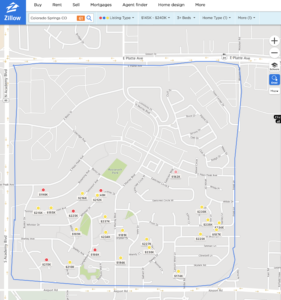Investing in Real Estate is not as hard as everyone wants you to believe
Today I want to go over filtering through the MLS as a real estate investor. This does not only pertain to real estate professionals so if you are an individual just looking for an investment property all this information applies to you and is totally free to use. The main aspects to consider when filtering through the MLS is the listed price, After Repair Value (ARV), location, style of the home, and the repairs needed.
There are three types of properties you have to navigate through to find deals on the MLS: retail, rentals, and flips. First you want to identify retail deals because these are not going to be for you as a real estate investor. Get used to spotting them quickly because they take up most of the MLS. The next type of deals are rental investment properties. These deals are great for building a long term portfolio of monthly income streams. The final type of deal is our diamond in the rough, flips. These are the deals which need a substantial enough amount of repairs that you will manage in order to raise the homes value and resell it as a retail deal.
How do I find the diamonds in the rough properties?
Here’s the big tip of the day!! Only 10-15 percent of the properties on the MLS have “true investor potential” so it’s imperative to stay committed to regularly checking as more inventory is added. Some investors like to narrow down the area and type of home you are interested in with a lot of search criteria. HOWEVER, I am recommending that you actually comb through the entire MLS inventory without the specific searches to find your diamond in the rough. It’s a great starting point to specify your neighborhood or zip code and then make personal judgement calls as you filter through the MLS. Whereas most investors search the remarks for terms like fixer, TLC, repair, handyman, mold, damage, investor, and cash only; I search for the hidden potential.
The majority of homeowners don’t perceive their house as distressed so it won’t be identified in the remarks but may be alluded to through the pictures alone.
For my example today I’m going to be using a home in Colorado Springs, Colorado in ZIP Code 80916 to determine the average home value in a location. The resources i use when evaluating Homes to determine my offer price and the homes potential is Zillow, redfin, and realtytrac. In the MLS or in Zillow I can draw a circle around a particular neighborhood and pull home data for active, pending, and sold properties. Your looking to compare homes based on similar parameters.

In our example, we are comparing a ranch home with three bedrooms, one bath and averaging 1,000 square-feet in above ground living area. This particular home has a special amenity of a 10,000 square-foot lot but we will consider this later in the analysis when we are determining the after repair value. In Colorado Springs the average sold house in this neighborhood closed around $175,000 and this number is determined by averaging the purchase prices from homes sold over the last six months. The shorter time frame you use to compare, the more accurate your After Repair Value or ARV will be.
When determining the neighborhood’s average purchase price it is also important to keep a tight perimeter because there can be a vast difference when crossing over a major highway or main road. This could cost you tens of thousands on your ARV is based off the wrong comparables.
You will compare real estate based off the same parameters and adjust any additional amenities later in your evaluations. Additional amenities include a garage, extra bathroom or bedroom, fireplace, view quality, lot size, square footage, and much more.
There is a separate video for evaluating the comparables to determine the ARV but in this example this home has a large lot size, a two car garage and a strong standing foundation. The comparables show an average price of $171,000 and With the alterations you will deduct or add dollars to the existing appraised value.
After you determine your average sales price for that neighborhood it’s time to start filtering and categorizing the potential deals. Next I look through the pictures of the comparable homes in Eastborough (Colorado Springs) and look for signs of remodeling like granite counters, new tile or carpet, and new appliances. A major plus is when real estate has updated HVAC, electricity, and sewage. The homes that have such updates could save you a lot of money since these can very costly to replace.

I also read through the remarks to see what updates have been mentioned or if it specifically identifies repairs that need to be done. I can quickly identify a recently renovated home by remarks such as gorgeous remodel, with new kitchen and appliances. More quick identifying term are move in ready or gorgeously finished home with open floor plan!
So after filtering through all the listed real estate you can dig deeper and evaluate comparables, determine your ARV, identify repairs and analyze the profit potential for the type of deal you are pursuing.
Get Free MLS access!
The best part about this is that it is free to use, you simply have to reach out to a realtor and get an automated search setup for the neighborhood you are watching. Good luck finding your next real estate investment deal and reach out if you want more information about any subject!
Thanks for reading!
I’m Arielle Levav of Noah’s Ark Investments helping you set sail to a better financial future.
Call Local (719) 466-NOAH
Call Toll-Free (888) 660-NOAH
https://youtu.be/WcpKmS3nXMs
